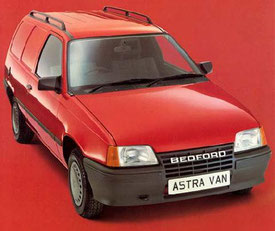
BEDFORD Car Manuals PDF

Bedford Car History
Some Bedford Car Service Manuals PDF above the page.
Cars "Bedford" are known to the most familiar English vantages, although neither for their modern appearance, nor for the originality of the design, they never differed from each other all other machines.
In practice, these were universal and inflexible working horses that could be used in any part of the UK and around the world.
The early history of the Bedford brand is associated with the Vauxhall machinery and distillery company, founded in the middle of the last century in the London quarter of Vauxhall.
In 1905 it moved to Luton, Bedfordshire, where it began producing passenger cars.
Important for the company is 20th rub. The American concern GM has long been planning to create a springboard in Great Britain for invading the European market, having acquired the Vauxhall company and in 1925 establishing it as its British subsidiary.
Plans to gain a foothold in the European market also affected the luxury car sector.
Activity in this direction began with the import of vintage Chevrolet cars to the UK, and at the end of the 20s. Their production began at the Hendon plant.
In 1931, the American industry began to flare up in the country with the production of light commercial goods, which reached the British market.
Bedford became their brand - after the name of the town and the entire county where the plant was located.
New production has become important for Vauxhall branches.
Bedford machines have achieved great success and have quickly become popular in all types of transportation.
The first to appear were the 2-tonne WHG and WLG vehicles with a wheelbase of 3330 and 3990 mm. Apparently, the price was extremely cheap - only 198 pounds sterling; They were followed by the release of light vans VY and VX, 1.5-ton WS series and 3-ton WT vans.
They were equipped with a 6-cylinder overhead valve gasoline engine (3177 cm3, 44 hp, on the WT series - 64 hp), and, rarely in Europe at that time, a 4-speed gearbox was often synchronized.
The first Bedford vehicle of all-wheel design became in 1934 a light BYC van with a weight of 600 kg.
The serial production of vehicles has not yet begun to flare up, as they had to be converted into military versions.
The main one was the “Pro” series, on the basis of which they produced vantage models OXD, OYD and OWS with brown vantages of 1.5-5 t, which removed a specific flat facing of the front part, which became their own distinctive feature familiar.
The most popular military version of the “M” series has become a light MWD pickup truck with a lifting capacity of 750 kg.
Since 1941, Bedford released a 3-ton QLD (4x4) model with a cab over the engine and an 8-speed transmission.
After the end of the war, civilian cars of pre-war design began to roll off the Bedford conveyors again.
In 1950, the first new design appeared - so called the “Great Bedford” - a 7-ton vantage of the “S” series with a half-hood layout with a very elegant rounded cab for its time with chrome-plated radiator linings.
After three years, this range was presented in 4 variants: onboard models SSZ and SLZ with a wheelbase of 2.9 and 4.0 m, Saddle tractor SA with a wheelbase of 2.2 m, All-wheel drive tractor R (4x4).
In 1953, the “Pro” series was replaced by a new bonneted 76-horsepower “TA” range, which consisted of numerous models with a torque of 1.25-5 tons.
In 1952, there was an unexpected change in the activity of Bedford - in its program, for the first time, a specially divided light van SA appeared - a half-bonnet layout with a weight capacity of 500-750 kg, which having grown up with one's own appearance. The car was a great success and was produced for nearly 20 years.
In 1958, the hood series “TA” was replaced by the new “TJ”, the design of which was made in the same style.
In 1960, the replacement series “S” introduced a fundamentally new range of “TK” with a capacity of 3-7 tons with a forward-facing and low-mounted cabin. In its rear part there is an engine with a power of 98-138 hp.
In 1966, Bedford for the first time introduced into its program important machines of the KM series with a new mass of up to 24 tons with a new diesel engine with a power of 143 hp.
Two years later, a variant with a 6x2 wheel arrangement appeared, and in 1972, a truck tractor for work in the warehouse of road trains with a total weight of 32 tons.
Until now, the design of English cars has become increasingly stronger One can sense the influx of internal cooperation among the members of the GM concern, including the European division of Opel and often the Japanese company Isuzu.
At the same time, light vanity machines were being refurbished.
In 1964, on the basis of the popular small cars Vauxhall Viva, the production of vans and pickups began with a weight of 300-500 kg.
In 1969, the current “SA” series was replaced by the “CF” range with brown weights from 900 kg to 1.75 tons. At the beginning of the 80s. A new series “CF2” has appeared with four models with a heavy weight of 2.3-3.5 tons, with a non-supporting body, with all-solid doors and a completely changed design.
